Interactive floor plan: Artist studio, Australia
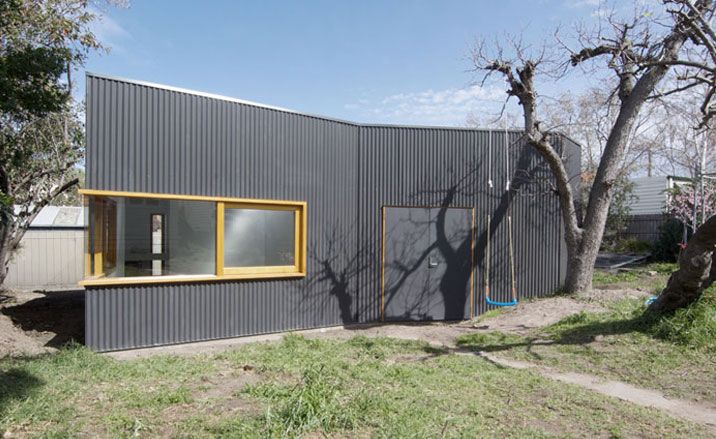
This artist’s studio, set in the Melbourne suburb of Flemington, is the latest project from up-and-coming Australian practice Open Studio. Established in 2005, the firm specialises in both combined and separate live and work environments - and with their uncluttered, ideas-based approach, it is Open Studio’s outside-the-box thinking that has made this commission a success.
In search of land to accommodate their growing needs, two relatives with neighbouring properties in Flemington decided to take down the fence dividing their back yards in order to free up the unusually wide and mostly unused
garden area, and make space for the
new structure.
Due to the studio’s unconventional location between two properties, the architects had to be particularly thorough with the positioning of the new volume in order to swerve Melbourne’s stringent planning laws. The solution was to design the building as two separate structures, as partner Heribert Alucha explains: “We combined them together in one single volume and tried to reinforce the idea of sharing the backyards. The location of the new building and some of the angles relate to the actual position of the title boundary.”
By carefully positioning the building within the site, Open Studio has created three landscaped segments – a playground, a vegetable patch and a seating area. And the distorted box-shape of the studio, with its angular resections and curves, encourages definition between the distinct outdoor zones.
Featuring a brightly lit painting studio, a large storage and workshop area, a garden shed and a garage, The Artist Studio’s well thought-out interior comes clean and neutral, while the outdoor and indoor areas are distinct, but also aesthetically united by the generous openings within the painting studio space.
Flexibility and clarity sit at the core of Open Studio’s design, and the Melbourne-based architects have produced a small but beautifully formed studio on a somewhat unexpected site.
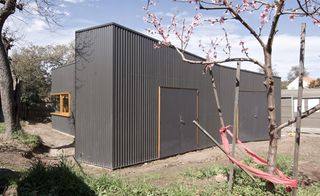
Located between two existing properties, the architects had to be particularly thorough with the positioning of the new volume in order to swerve Melbourne’s stringent planning laws.
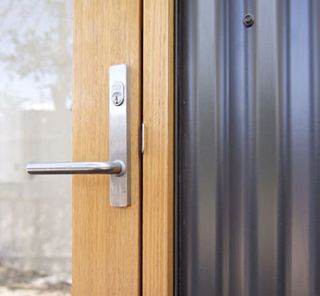
The solution was to design the building as two separate structures
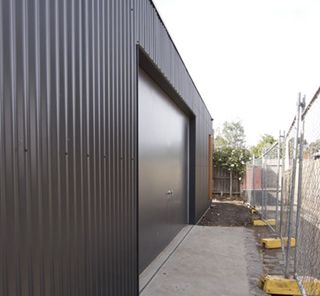
The outdoor and indoor areas of the Artist Studio are distinct, but also aesthetically united by the generous openings within the studio space.
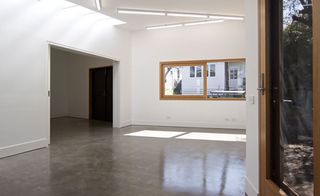
The Artist Studio’s well thought-out interior comes clean and neutral with plenty of open space for painting.
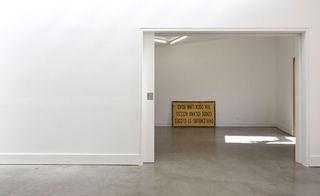
Bright and airy, Open Studio have designed the space with both flexibility and clarity in mind.
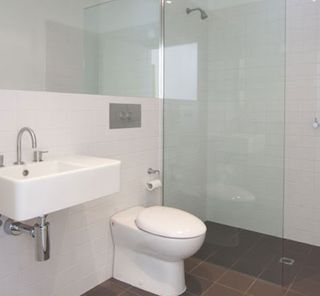
Specialising in both combined and separate living and working environments, the architects at Open Studio have developed the Artist Studio with every eventuality in mind.
Wallpaper* Newsletter
Receive our daily digest of inspiration, escapism and design stories from around the world direct to your inbox.
Ellie Stathaki is the Architecture & Environment Director at Wallpaper*. She trained as an architect at the Aristotle University of Thessaloniki in Greece and studied architectural history at the Bartlett in London. Now an established journalist, she has been a member of the Wallpaper* team since 2006, visiting buildings across the globe and interviewing leading architects such as Tadao Ando and Rem Koolhaas. Ellie has also taken part in judging panels, moderated events, curated shows and contributed in books, such as The Contemporary House (Thames & Hudson, 2018), Glenn Sestig Architecture Diary (2020) and House London (2022).
-
 16Arlington’s Marco Capaldo on ‘turning up the volume’ with an A/W 2025 collection rooted in 1980s cinema
16Arlington’s Marco Capaldo on ‘turning up the volume’ with an A/W 2025 collection rooted in 1980s cinemaRevealed at an intimate dinner at London Fashion Week, 16Arlington designer Marco Capaldo found inspiration for an amped-up A/W 2025 collection in David Lynch’s ‘Blue Velvet’, Wim Wenders’ ‘Paris, Texas’ and Robert Palmer’s ‘Addicted to Love’ video
By Jack Moss Published
-
 High low culture and the sickly sweetness of Tootsie Rolls: Derrick Adams in London
High low culture and the sickly sweetness of Tootsie Rolls: Derrick Adams in LondonDerrick Adams plays with themes of Black Americana in ‘Situation Comedy’ at Gagosian London.
By Hannah Silver Published
-
 Lamborghini, fast friends with the Italian State Police for two decades
Lamborghini, fast friends with the Italian State Police for two decadesWhen the Italian police need to be somewhere fast, they turn to a long-running partnership with one of the country’s most famed sports car manufacturers, Lamborghini
By Shawn Adams Published
-
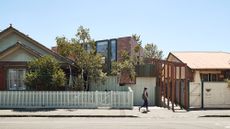 A suburban house is expanded into two striking interconnected dwellings
A suburban house is expanded into two striking interconnected dwellingsJustin Mallia’s suburban house, a residential puzzle box in Melbourne’s Clifton Hill, interlocks old and new to enhance light, space and efficiency
By Jonathan Bell Published
-
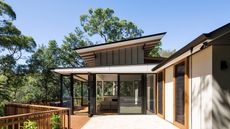 Palm Beach Tree House overhauls a cottage in Sydney’s Northern Beaches into a treetop retreat
Palm Beach Tree House overhauls a cottage in Sydney’s Northern Beaches into a treetop retreatSet above the surf, Palm Beach Tree House by Richard Coles Architecture sits in a desirable Northern Beaches suburb, creating a refined home in verdant surroundings
By Jonathan Bell Published
-
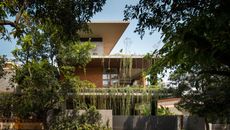 Year in review: the top 12 houses of 2024, picked by architecture director Ellie Stathaki
Year in review: the top 12 houses of 2024, picked by architecture director Ellie StathakiThe top 12 houses of 2024 comprise our finest and most read residential posts of the year, compiled by Wallpaper* architecture & environment director Ellie Stathaki
By Ellie Stathaki Published
-
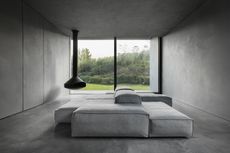 A monolithic house in rural Victoria celebrates 50 shades of grey
A monolithic house in rural Victoria celebrates 50 shades of greyAdam Kane Architects’ monolithic house in rural Victoria, Grey House, is ‘a testament to the power of simplicity and harmony’
By Léa Teuscher Published
-
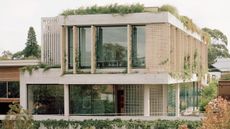 Is Rochester Street Office a creative worker’s dream? Inside a Sydney workspace echoing calmness and light
Is Rochester Street Office a creative worker’s dream? Inside a Sydney workspace echoing calmness and lightRochester Street Office by Allied_Office merges utilitarian design with cascading vegetation, presenting a thriving environment for creativity and collaboration
By Tianna Williams Published
-
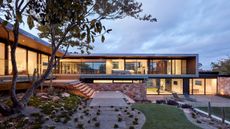 A Melbourne family home draws on classic modernism to create a pavilion in the landscape
A Melbourne family home draws on classic modernism to create a pavilion in the landscapeThis Melbourne family home by Vibe Design Group was inspired by midcentury design and shaped to be an extension of its verdant site
By Jonathan Bell Published
-
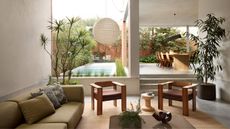 Tour Clifton House, an airy Bondi family home, brimming with natural light and foliage
Tour Clifton House, an airy Bondi family home, brimming with natural light and foliageClifton House by Anthony Gill Architects is a North Bondi home using an abundance of vegetation to create a slice of privacy within the suburbs
By Tianna Williams Published
-
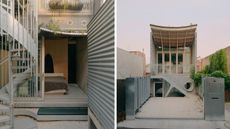 Tour this compact Melbourne home, where a small footprint is big on efficiency and experimentation
Tour this compact Melbourne home, where a small footprint is big on efficiency and experimentationNorthcote House is designed by architects David Leggett and Paul Loh as their own home in Melbourne
By Stephen Crafti Published